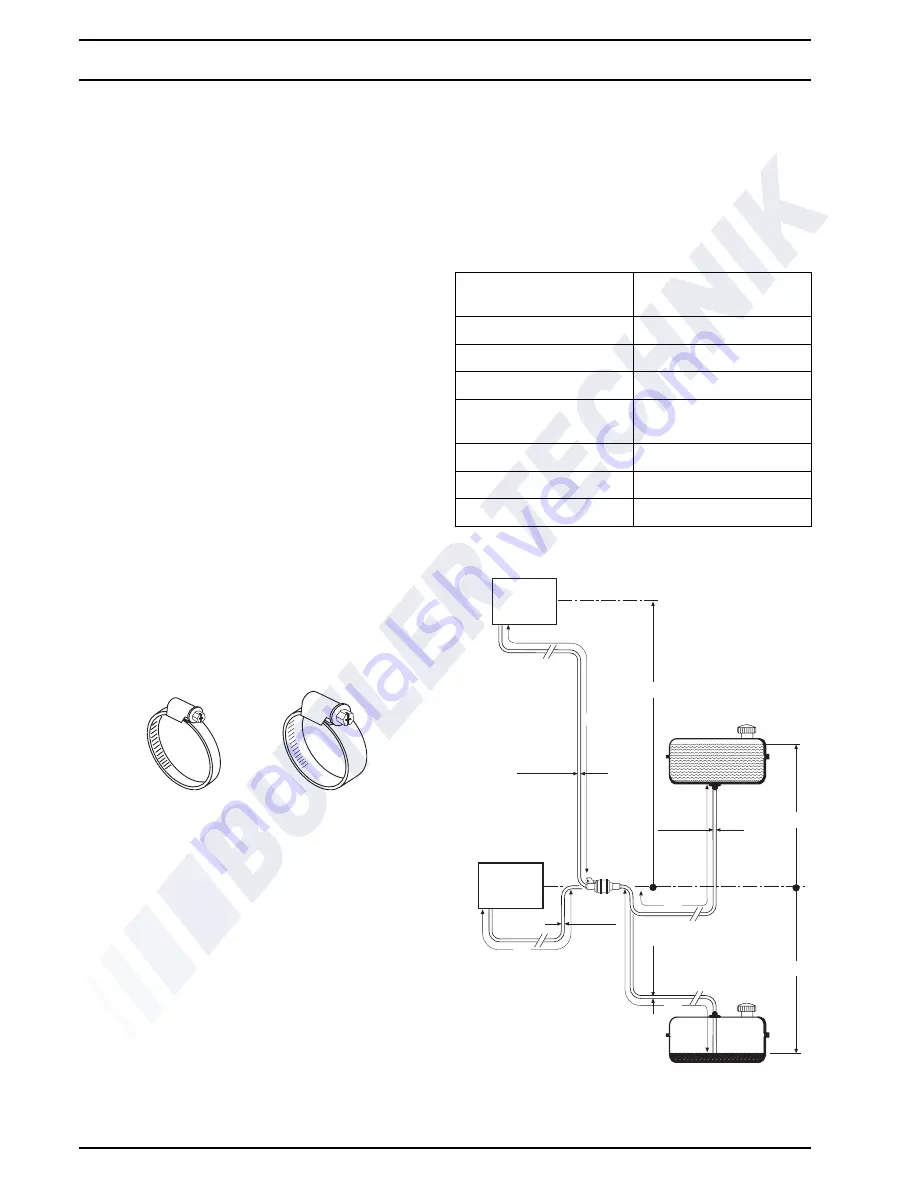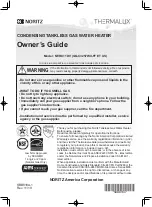
8 Servicing
Thermo 90
804
Fig. 801 Example for Heater Installation in Lorry
8.6
Visual Inspections and Installation
Regulations
8.6.1 Connection to the Vehicle's Cooling
System
In thermostat circuits only thermostats opening at < 65° C
are to be used.
The installation of the heater should be in a location as
low as possible to ensure self-venting of the heater and
circulation pump. This applies in particular for the
circulation pump, which is not self-sucking.
The heater is to be connected to the cooling system
according to Fig. 801. The amount of coolant in the
cooling system must be at least 6 litres.
As a rule, the coolant hoses supplied by Webasto
together with the heater are to be used. Otherwise the
hoses must at least meet the requirements of DIN 73411.
The hoses must be routed without kinking, and for proper
venting where possible in an upwards direction.
Hose connections must be secured with hose clamps to
prevent slippage.
NOTE
Hose clamps must be torqued to 1.5 Nm (clamps
previously in use) or to 5.0 Nm (new, wide clamps).
Prior to first operation of the heater or after replacement
of the coolant, bleed the cooling circuit. Heater and lines
have to be installed so that a static venting is guaranteed.
Insufficient venting during heating operation may cause
failure due to overheating.
Proper venting is indicated by a circulation pump almost
noiseless in operation. Insufficient venting during heating
operation may cause release of the resettable
temperature limiter.
8.6.2 Connection to the Vehicle's Fuel System
Fuel is tapped from the fuel reservoir of the vehicle or from
a separate fuel container.
The rated pressure at the fuel tapping location is shown
in the following table.
Fig. 802 Fuel Supply
previous
new
Permissible fuel feed
height H (m)
at max. permissible over-
pressure (bar) in fuel tank
0.00
0.20
1.00
0.11
2.00
0.03
Permissible fuel suction
height S (m)
at max. permissible low
pressure (bar) in fuel tank
0.00
– 0.10
0.50
– 0.06
1.00
– 0.02
max. 3 m
i ø 2 mm
i ø 2 mm
S
H
i ø 2 mm
l
1
l
1
i ø 2 mm
l
2
l
2
HG
HG
l
1
+ l
2
≤
10.0 m
l
1
≤
1.2 m
l
2
≤
8.8 m
Summary of Contents for Thermo 90
Page 9: ...1 Introduction 104 Page free for notes ...
Page 13: ...2 General Description Thermo 90 204 Page free for notes ...
Page 18: ...Thermo 90 3 Functional Description 305 Page free for notes ...
Page 20: ...4 Technical Data Thermo 90 402 Page free for notes ...
Page 26: ...6 Functional Tests Thermo 90 602 Page free for notes ...
Page 41: ...Thermo 90 8 Servicing 809 Page free for notes ...
Page 53: ...10 Packaging Storage and Shipping Thermo 90 1002 Page free for notes ...
















































